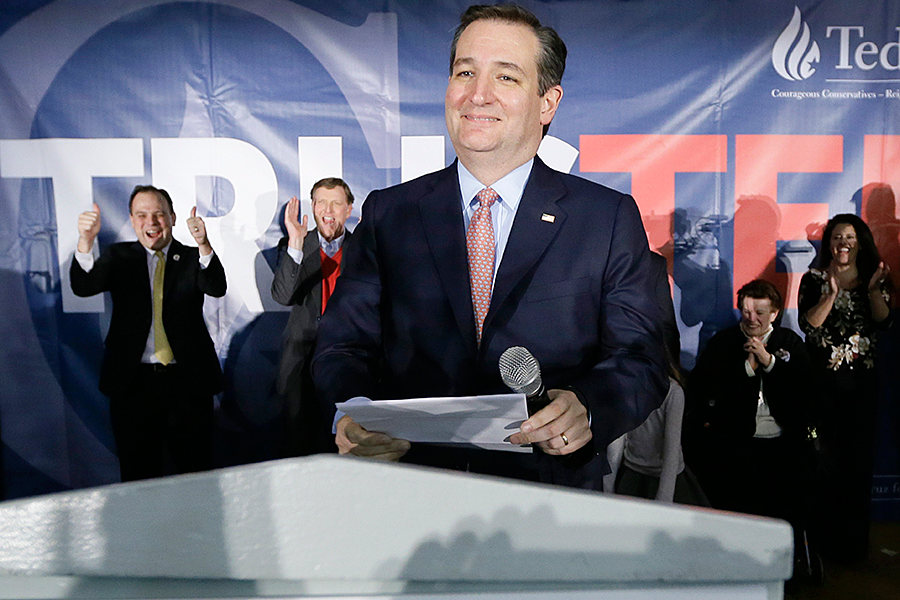The two numbers that explain Iowa caucus vote
Loading...
Two numbers explain a lot about what happened in last night’s Iowa caucuses – and what might now occur in the primary race ahead.
The first is 64. That’s the percentage of Hawkeye State GOP caucus goers who were Evangelicals, according to entrance polls. That’s much higher than anticipated: The final Des Moines Register poll released Saturday assumed that about 47 percent of Republican caucus attendees would be evangelical Christians.
Ted Cruz did really well with these voters. He won about one-third of Evangelicals, while Donald Trump won about one-fifth.
“And that pretty much explains Cruz’s victory,” writes John McCormack in the right-leaning Weekly Standard.
Senator Cruz outperformed his poll numbers and pulled off a surprising win because Evangelicals turned out in big numbers. Among non-evangelical voters, he lost to Trump, 22 to 29 percent. That’s close to how final polls had predicted the caucuses would end up.
What’s the larger meaning of this? That polling is really hard, for one thing. Miss on the electorate’s demographics, and you miss on final numbers. It’s not just about predicting how people will vote. It’s about predicting who will vote, as well.
Also, Mr. Trump may have upended the race, but he hasn’t destroyed the effectiveness of old-style retail campaigning. Cruz – the son of a preacher – worked for years to win the grass-roots religious vote. Trump targeted a few evangelical leaders whose endorsement would make cable news, such as Liberty University’s Jerry Falwell Jr. Cruz’s approach won, and he appears to be the Evangelicals’ 2016 favorite.
The second number is 84. That’s the percentage of voters age 18 to 29 won by Bernie Sanders, according to an NBC exit poll.
That’s dominance, at least in that age group. Senator Sanders won the next oldest group as well, taking 58 percent of voters age 30 to 44.
Look at it this way: Sanders did better with young voters than did Barack Obama in his hope-and-change campaign of 2008. Obama won 57 percent of the under-29 crowd in that year’s Iowa Democratic caucus.
Young adults made up a smaller share of the vote this time around, 18 percent of caucus attendees, as opposed to 22 percent in 2008, points out Vox’s Sarah Kliff.
“Still, enough of them got behind Sanders that they were able to boost his performance significantly – and send him off to New Hampshire in a strong way,” writes Ms. Kliff.
Sanders is the polling leader in upcoming New Hampshire, but after that he faces a tough slog. Nevada, South Carolina, and other upcoming primaries feature far more minority and moderate voters, who skew Hillary Clinton’s way.
But his Iowa dominance with young voters shows how he has tapped into a real strain of discontent in a core Democratic constituency. The Clinton campaign clearly underestimated Sanders, and is lucky to escape Iowa with a virtual tie it can portray as a victory.
Sanders speaks to young people’s feelings that their own futures are at stake in the election, writes left-leaning Greg Sargent at his Plum Line Washington Post blog. Mrs. Clinton has yet to demonstrate an ability to do the same thing.
“So another lesson for Clinton may be that she needs to speak more effectively to these voters – and that this could matter in November, because it raises questions as to whether she can sufficiently energize them in Obama-like numbers,” writes Mr. Sargent.








